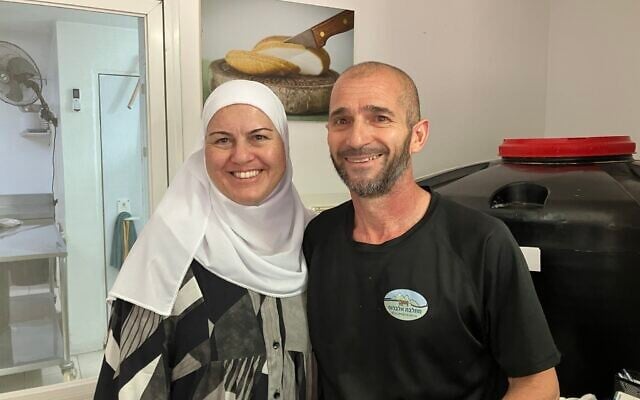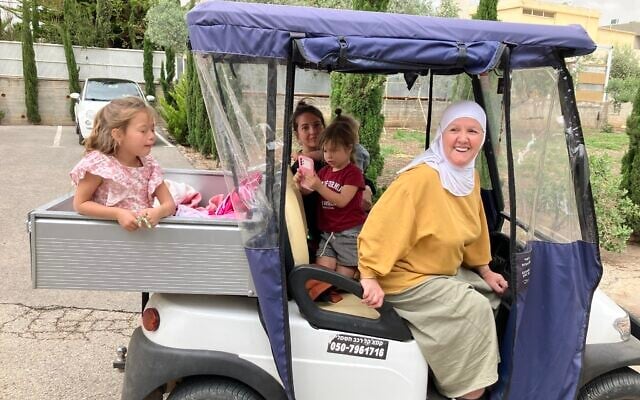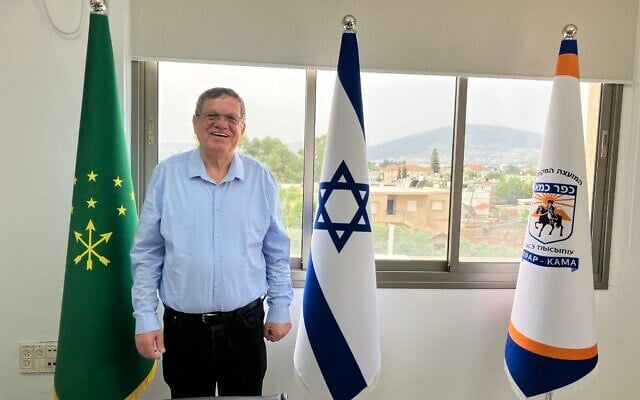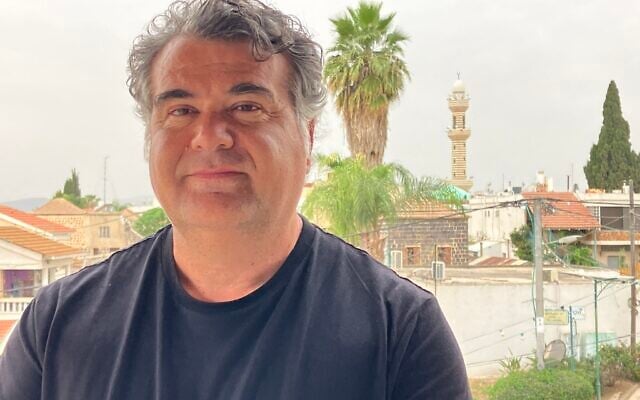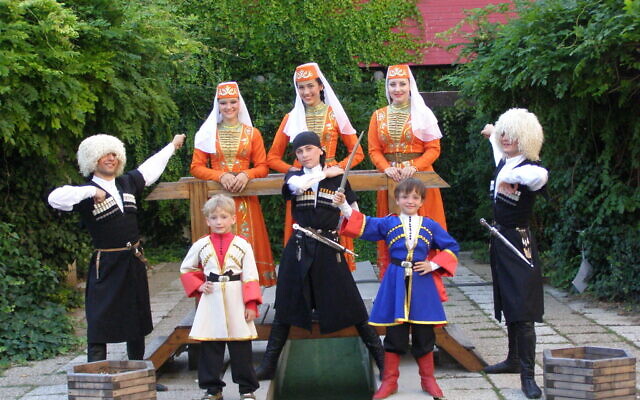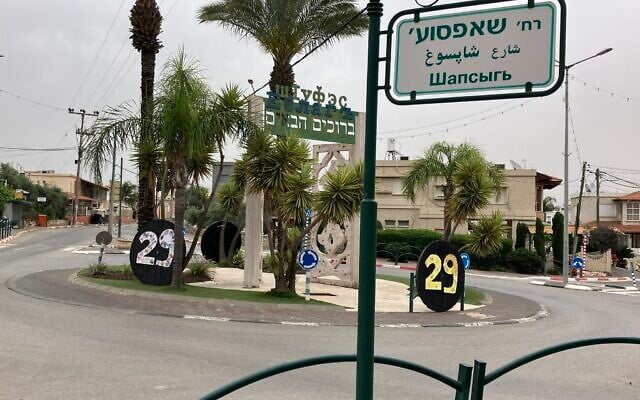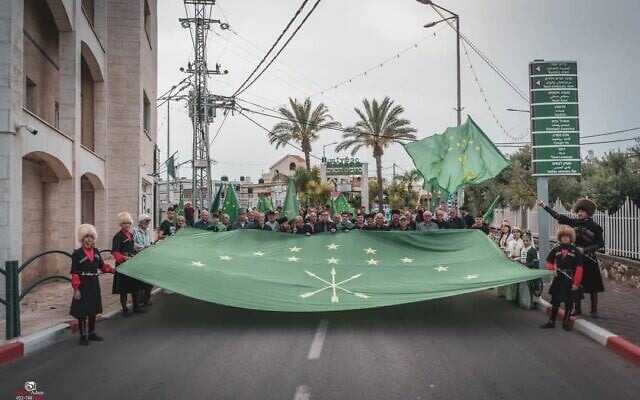


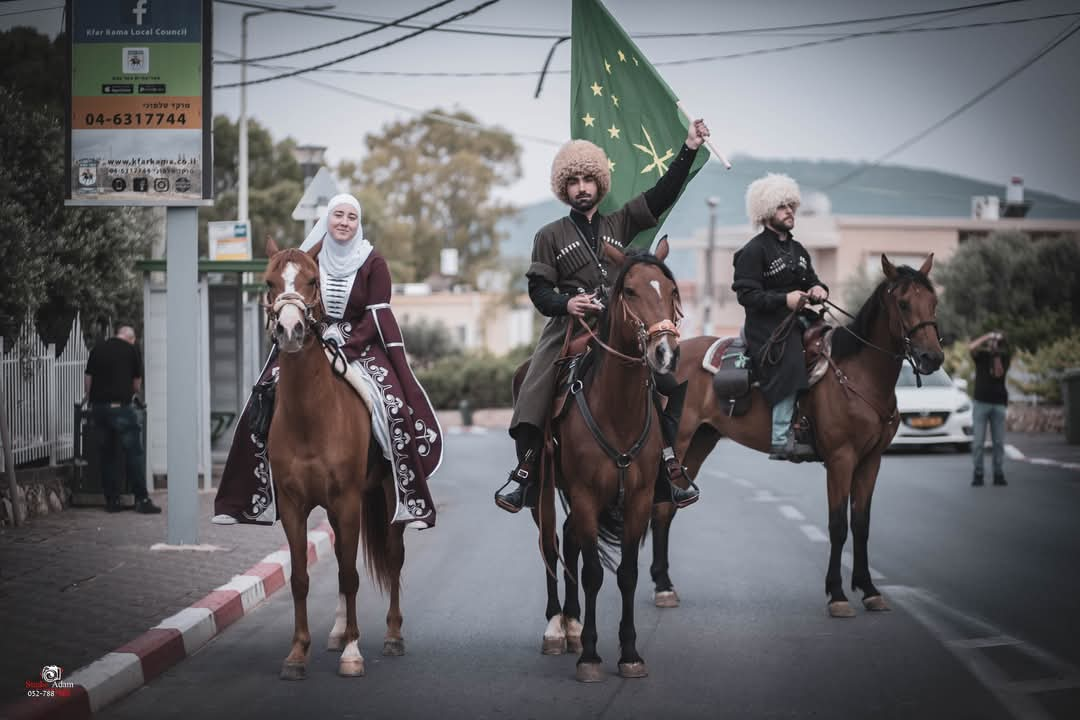
KFAR KAMA – Sara Thakoo is an eighth-generation resident of Kfar Kama.
A non-Arab Sunni Muslim, the 48-year-old speaks fluent Hebrew, Arabic, English, and, most importantly, Adghye, the language of the Circassian people, some of whom, like Thakoo’s ancestors, settled in the lower Galilee after fleeing their Caucasus homeland in the mid-1800s.
Thakoo insists on speaking Adghye with her four children and some of the local customers who come to buy traditional Circassian cheese at Elbrus Dairy, her boutique cheese store in the heart of Kfar Kama, one of two Circassian villages in northern Israel.
Before she goes shopping, she thinks in Adghye about what groceries she needs to buy. But when she puts pen to paper, “I write the shopping list in Hebrew,” she told The Times of Israel during a recent visit to Kfar Kama.
Thakoo’s layered identity is echoed by others in the 5,000-strong community of Circassians in Israel who are determined to maintain their language, customs – and collective memory.
Each year on May 21, Kfar Kama and Rehaniya, the other Circassian villages in Israel, commemorate the loss of their people and their homeland on the Black Sea.
In the mid-1700s, the Russian Empire laid claim to Circassia as it sought access to the Black Sea, kicking off decades of brutal attacks by Tsarist forces, who burned down Circassian towns and villages, killing or expelling their inhabitants. By May 21, 1864, the day Russia declared victory, any ostensible resistance had been crushed and an estimated 1 million Circassians were dead.
Survivors were expelled from the territory and made their way to the Ottoman Empire; about half died of starvation and disease en route.
Some resettled in Turkey and Jordan, while others reached the Galilee in what is now Israel.
In the 1948 War of Independence, the Circassians chose to fight with the Jews, becoming an integral part of the state. Today, Circassian men are included in the Israel Defense Forces’ mandatory draft, unlike most other Muslim Israelis.
Yet it isn’t only on May 21 that Thakoo talks to her children about their heritage.
“We have to educate them to remember who they are,” she said.
Kfar Kama, located in a lower Galilee valley between Mount Tabor and the Sea of Galilee, was selected in 2022 as an international “tourist village” by the United Nations World Tourism Organization. Representatives were unable to attend a UN event honoring the designees, however, because Saudi Arabia refused to issue visas for the Israeli delegation.
Home to some 3,500 inhabitants, almost all of whom are Circassian, the village reflects its unique identity with street signs in Adghye, Hebrew and Arabic. Many buildings date from the Ottoman era, with dark basalt stones and green shutters. It’s not uncommon to see women on golf carts zipping around the storybook setting.
About 30,000 tourists used to visit the village each year, before the numbers dropped due to COVID-19 and then war. But visitors are starting to return.
Located relatively distant from the Lebanon border, Kfar Kama did not suffer any damage from months of rocket, missile and drone attacks launched by the Hezbollah terror group between October 8, 2023, and November 24, 2024.
But the war was still felt acutely by the town, which took in families from Rehaniya, located some 4.5 kilometers (2.6 miles from the Lebanon border) during the fighting.
“There’s never been peace in this region,” said Zakaria Napso, the mayor of Kfar Kama. “Even if you return in 1,000 years, there won’t be peace. It’s not about religion. It’s about the land.”
The village is hoping to expand its offerings to visitors with plans for a new tourist center, at least part of which may be funded by NIS 3.9 billion ($1.1 billion) promised by the government to the Circassian and Druze minorities in March.
Despite his gloomy outlook on the future, Napso said he was “100 percent” optimistic about the government making good on the promise.
“We’re ready with building projects,” he said. “We’ll get the money.”
However, he said his community doesn’t get involved in national politics.
“We’re more local,” he said, pointing out with pride that there’s no crime in the village.
“Even though we’re known as good fighters, there’s no custom of fighting between us,” Napso said.
Although Circassians around the world have “a dream to return to our homeland,” the mayor said that for now he was happy to settle for a village expansion to provide housing for young Circassian families, who could drift away from the insular community and its heritage if forced to settle down elsewhere.
“We have to have a new neighborhood to protect the authenticity of our village,” Napso said.
Preserving Circassian culture is not “an easy task,” according to Aibek Napso, a cousin of the mayor and the director of the Circassian Heritage Center, which opened in 2008.
Showing The Times of Israel around the center’s antique furniture, weapons and traditional Circassian clothes, Napso said he sees his own personal mission interlocking with the museum’s goal of preservation and education.
“My father was very involved in his Circassian roots,” he said.
It is estimated that there are approximately seven million Circassians scattered around the world today, with the largest population in Turkey. As in Israel, other parts of the far-flung Circassian diaspora place a premium on preserving their unique culture.
Every summer, the Israeli Circassian communities hold a two-week summer camp, bringing together young people who come from Turkey, Russia and Jordan.
In Israel, many young Circassians did not have as strong a connection to their roots as in previous generations, the museum director said.
He noted that in the past, all businesses in the village would close on May 21 out of respect for the Circassian Genocide Memorial Day.
“Now, there are steak and pizza restaurants open like regular days,” he said. “People have to stop and honor what happened.”
A few streets away, in the cheese shop, Thakoo was talking about her sixth-grade daughter. At the village’s elementary school, students learn all their subjects in Hebrew, but have lessons in Adghye as well.
Adghye, which is mostly written with a Cyrillic alphabet, is the language used at home by most Circassians and it’s what is spoken when neighbors get together. But Thakoo said when her daughter chats with friends from school on WhatsApp, they resort to a third language.
“They talk all the time in English,” she said.
In its latest edition from 2010, UNESCO’s Atlas of the World’s Languages in Danger listed Adghye as “vulnerable.” The designation is its lowest level of concern — a testament to the Circassians’ commitment to their heritage — but concern nonetheless.
The cheese shop itself is in some ways a manifestation of what can come together when cherished Circassian traditions meet life in modern Israel.
Thakoo and her husband opened Elbrus about seven years ago, as he wrapped up a 14-year career in the IDF. At the time, she had been working at Bank Hapoalim, the country’s largest bank.
“There was a reawakening of Circassian traditions and more tourists were coming to the village,” Thakoo said. She recalled that several women made traditional Circassian cheese at home, but nobody was making it commercially, to sell to curious Israeli Jews and Arabs visiting Kfar Kama. They decided to try, naming the business after the highest peak of the Caucasus Mountains.
But the interweaving of identities and cultures comes with challenges too. Thakoo said some people subject her to their “preconceived notions” when they see her hijab, which is white and has a special beaded border unique to the Circassians.
“They’re always suspicious and I understand the problem between Arabs and Jews,” Thakoo said. “I’m a Muslim but I speak Hebrew fluently. There are days I feel like a minority. There are other days I feel Israeli.”
Israelis from all walks of life should respect the multifaceted Circassian experience, said Napso, the museum director.
“I’m part of this country,” he stressed. “I’m Circassian, I’m Israeli and I’m Muslim. The three identities go together, not one before the other.”

